-
About
- About Listly
- Community & Support
- Howto
- Chrome Extension
- Bookmarklet
- WordPress Plugin
- Listly Premium
- Privacy
- Terms
- DMCA Copyright
- © 2010-2025 Boomy Labs

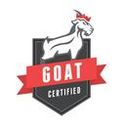 GOAT Series Staff
GOAT Series Staff
Listly by GOAT Series Staff
What is the greatest Book-to-Movie adaptation of all time?
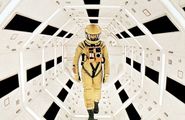
This book was originally a collaborative project worked on by both author Arthur C. Clark and director Stanley Kubrick, and it was always envisioned as a visual and aural presentation. However, Clark worked more on the final product, and Kubrick ended up not getting his name on the book jacket, but making it into a feature film instead. What is so fantastic about this pairing is that the book and the movie are such great compliments but also offer such different experiences. Clark is a scientist and a very realistic writer, and the book is full of evidence and explanations to back up what the monolith is, how the human technology works in this artificial “future,” and what the motivations are. The film has very little dialogue and leaves most of that up to imagination or interpretation; however, the visuals and music are so good that key scenes, like the shutting down of Hal’s memory or the apes finding the monolith, have been both parodied and revered throughout pop culture. The downside to this pairing is that some claim that all the esoteric imagery in the movie is hard to actually decipher if you haven’t read the book, and others who loved the film’s visuals are disappointed that Clark is not really a poetic or aesthetic writer; he strongly favors “hard” scientific writing to flowery imagery.
Book Release: 1962 | Film Release: 1971 | Author (book): Arthur C. Clark | Director (film): Stanley Kubrick | Stars (film): Keir Dullea, Gary Lockwood
Genre: Science Fiction | Book Acclaim: Overall positive acclaim | Film Acclaim: Considered one of Kubrick's crowning achievements due to the strong score and visual elements | Major Differences: The movie has less scientific explanation and is more focused on imagery, and the book is heavy on scientific explanation like most of Clark's work.
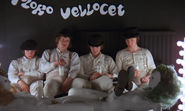
This is another example of Kubrick doing an excellent job with a classic science fiction story. Anthony Burgess wrote A Clockwork Orange in 1962 about the rise in gang violence in England and was inspired by an incident when his wife was assaulted. The book started as a non-fiction behaviorist essay, and he turned it into a full novel quickly in order to make some needed cash. The result was his most highly acclaimed work, a story about a young man who commits atrocious and violent acts and is unable to be reformed by society. In 1971, Kubrick got the rights and turned the story into a movie. The resulting film is an odd mixture of violence and visually stunning scenes that paint a surreal image of a dystopian future where gangs run wild and people are vain and petty. Although the film achieved great success, Burgess regrets the movie being made, because he fears it makes it easier for viewers to misinterpret the message as glorifying violence. This film does a great job of bringing an awesome story to life, but loses some credibility since the author does not approve.
Book Release: 1962 | Film Release: 1971 | Author (book): Anthony Burgess | Director (film): Stanley Kubrick | Stars (film): Malcolm McDowell, Patrick Magee, Adrienne Corri, Miriam Karlin
Genre: Dystopian Crime, Science Fiction | Book Acclaim: Was hailed as controversial and banned | Film Acclaim: Widely hailed as a success | Major Differences: Burgess meant the book to warn against violence and gang activity, but the film seems to glorify it. In the film, Alex, the anti-hero, loves classical music, an element added to justify the classical score.
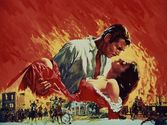
Margaret Mitchell’s classic novel Gone With the Wind, written in 1936, stunned readers with its poetic language and awesome story. The book is groundbreaking in that it is a coming of age war story about a woman, not a man, but was criticized for its positive portrayal of slavery and use of black stereotypes. However, many critics see it more as a morality tale that shows the folly of slavery and the plush southern lifestyle, rather than some racist glorification. The book was turned into a movie starring Vivien Leigh and Clark Gabel in 1936, with Victor Fleming as the director. The film was criticized by some as being “bloated” and overdramatic because of its length and content, but this is honestly one of the best cases of a movie staying almost entirely true to the book. The film is also filled with famous lines and scenes that defined modern cinema, such as Scarlett and Ret kissing with the burning city in the background, and Scarlett’s sassy lines of dialogue. The film has also been criticized by feminists for mixing romance and rape – there is a scene where Ret forces himself on an angry Scarlet, and the next morning she wakes up happy and fulfilled. Despite the mixed response to the subject matter, this remains one of the greatest books and movies of all time, and a great example of a strong book-to-movie adaptation.
Book Release: 1936 | Film Release: 1939 | Author (book): Margaret Mitchell | Director (film): Victor Fleming | Stars (film): Clark Gable, Vivien Leigh, Leslie Howard, Olivia de Havilland
Genre: Romance, Historical Fiction | Book Acclaim: Received the Pulitzer Prize for her work | Film Acclaim: positive reviews overall, although some called it "bloated" due to length and drama; criticized for glorifying slavery | Major Differences: Scarlett holds up the turnip and claims she will never go hungry again, Scarlet and Ret kissing while fleeing the burning city.
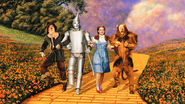
Beloved children’s book The Wizard of Oz, written in 1900 by L. Frank Baum, was an instant classic that captivated adults and kids alike with its surreal world and loveable characters. The book sold like crazy, was made into a musical, and then adapted from the musical into a feature film in 1939 by Victor Fleming. The film starred Judy Garland singing and acting as Dorothy, and had audiences completely enthralled. Since this was one of the first color films, audiences were totally blown away when the landscape changes from dull Kansas black and white to technicolor bliss in the land of Oz. The one downside here is that the book is too long to all fit in the film, and some really good scenes and characters were left out.
Book Release: 1900 | Film Release: 1939 | Author (book): L. Frank Baum | Director (film): Victor Fleming | Stars (film): Judy Garland, Frank Morgan, Ray Bolger, Bert Lahr, Jack Haley, Billie Burke, Margaret Hamilton, Charley Grapewin, Clara Blandick, Pat Walshe
Genre: Fantasy, Adventure | Book Acclaim: The first two editions sold out immediately | Film Acclaim: One of the most beloved films in history | Major Differences: The book has more characters and scenarios, and the movie is more focused on Dorothy learning the value of home than just her adventure and journey to get home.
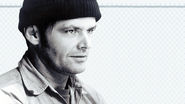
This novel by Ken Kesey focuses on behaviorism and what happens when a free spirit is introduced to the controlled environment of a mental institution. The story itself, written in 1962, is very compelling and counterculture, and the movie version, from 1975, also packs a heavy punch. The film was directed by Milos Forman, and features Jack Nicholson in the lead role. This is a great film to watch if you want a good story and some anti-establishment sentiment, and the movie certainly does the book justice.
Book Release: 1962 | Film Release: 1975 | Author (book): Ken Kesey | Director (film): Milos Forman | Stars (film): Jack Nicholson, Louise Fletcher, William Redfield
Genre: Behaviorism novel, American novel | Book Acclaim: Best known of Kesey's work | Film Acclaim: Considered an all-time classic film | Major Differences: Less focus on the behavior of all characters and how they interact, and more on the main character being the heroic figure.
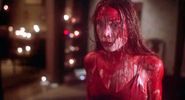
Stephen King’s most controversial work, Carrie is told mostly through expostulatory newspaper clippings and letters that detail the horrible events that occurred in Maine when an unstable, telekinetic girl committed mass murder. Many of King’s books have been made into movies, from the absolutely corny and made for TV to timeless masterpieces. This particular film, directed by Brian De Palma, was an instant hit. The use of gorgeous actress Sissy Spacek as Carrrie worked out perfectly, due to her stunning yet creepy looks. The movie also features John Travolta, great music, tons of visuallygreat scenes, and plenty of blood and blood-curdling horror. The only downside of this translation is that the book and the movie are pretty dissimilar, due to the expository way the book is written.
Book Release: 1974 | Film Release: 1976 | Author (book): Stephen King | Director (film): Brian de Palma | Stars (film): Sissy Spacek, John Travolta, Piper Laurie, Amy Irving, William Katt
Genre: Horror | Book Acclaim: Highly acclaimed | Film Acclaim: Considered one of the best films of the year | Major Differences: the book is mostly told through experts from newspapers and letters, as though it were a true story; More focus in the film on just following Carrie's story instead of the aftermath.
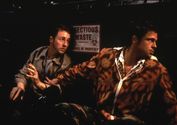
This Chuck Palahniuk book was originally adapted from a short story, and was controversial even before being made into a major motion pictures. Many critics believed it to be too dark and nihilistic, embracing the ideas of insanity, violence, and anarchy. However Palahniuk always intended the story to be satirical and not taken completely seriously. The film was directed by David Fincher, and it stars Brad Pitt and Edward Norton. Pitt is not real, but a figment of Norton’s demented, sleep deprived perception that causes him to start illegal fighting groups and generally commit mayhem and spread destruction. While many loved the film for the score and visual aspects as well as the acting and understood it was meant to be dark humor, others found it offensive and disturbing. This is a great example of a book being made into a solid movie, but some found the whole idea too much to stomach.
Book Release: 1996 | Film Release: 1999 | Author (book): Chuck Palahniuk | Director (film): David Fincher | Stars (film): Brad Pitt, Edward Norton, Helena Bonham Carter
Genre: Satirical fiction | Book Acclaim: at first was published as a short story and rejected as disturbing, but the novel received acclaim | Film Acclaim: 50/50 - some thought it was brilliant, others disrupting; the debate surrounding its portrayal of violence was similar to the one that followed A Clockwork Orange | Major Differences: very similar - just slightly more graphic than the book
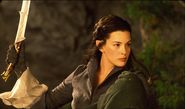
This series was first written by J.R.R. Tolkien, initially directly after his time serving in WWII, but not published until 1971. The books were a huge success, and Tolkien finally saw his dream come to life. The fantastical world of Middle Earth featuring Hobbits, Elves, and Dwarves, was a reality that millions read and loved. Tolkien died soon after, and although he knew his work was influential, he had no idea just how huge it was. In 2001, Peter Jackson turned the series into a film trilogy, which is now the greatest grossing film series of all time. The movies were hailed for their awesome special effects and use of language from the books. However, some diehard readers did criticize the films for leaving out important plot elements from the story, and for focusing so much on the epic battles in order to appeal to today’s viewers.
Book Release: 1954-1955 | Film Release: 2001-2003 | Author (book): J.R.R. Tolkein | Director (film): Peter Jackson | Stars (film): Elijah Wood, Ian McKellen, Liv Tyler, Vigo Mortensen, Sean Astin, Cate Blanchett, Orlando Bloom, Hugo Weaving
Genre: Fantasy, Adventure | Book Acclaim: One of the best selling and highest grossing series of all time | Film Acclaim: Highest grossing film series in history, highly critically accalimed | Major Differences: some things are skipped, less description and scenery and more violence and brutality
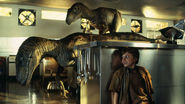
Jurassic Park is one of the best examples of a book turned into a wildly successful movie. Michael Crichton writes novels that are usually based on history or science, in an expository fashion, as though the events in the stories really happened. Jurassic Park is a book from 1990 that serves as a cautionary tale against what can happen when genetic engineering gets out of control. The 1993 Steven Spielberg film is more of an action adventure story about dinosaurs getting loose at an amusement park, but it is still a hell of a lot of fun to watch, and very satisfying. The major criticism of this adaptation is that the movie does not convey the dark implications of the book. For example, in the movie, John Hammond is a loveable genius who creates dinosaurs to amuse his grandchildren and friends, while in the book he is an evil, selfish mastermind who gets eaten by dinosaurs in the end.
Book Release: 1990 | Film Release: 1993 | Author (book): Michael Crichton | Director (film): Steven Spielberg | Stars (film): Sam Neill, Laura Dern, Jeff Goldblum, Richard Attenborough, Samuel L. Jackson, Wayne Knight
Genre: Science Fiction | Book Acclaim: Bestseller and highly regarded before the film was released | Film Acclaim: Very high critical and audience acclaim | Major Differences: many story differences; the book is much darker; for example, Hammond is a very unlikable character who gets eaten by dinosaurs in the book, but a loveable and silly character in the movie
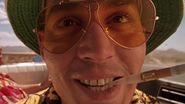
This work of classic gonzo journalism by Hunter S. Thompson tells the story of one man’s trip to Vegas to cover a sporting event that turns into an all-out drug bender, but it is so much more than that. The 1971 novel is really a story about the loss of innocence from the 1960s, and the changing tide of the country. The 1998 movie adaptation with Johnny Depp does a great job of conveying this, although it does focus more on the drug bender aspect than the deeper meaning. Some enjoyed the film, while other found it completely unwatchable and too cartoonish due to Terry Gilliam’s odd directing style. However, as a die-hard Thompson devotee, this gets my stamp of approval.
Book Release: 1971 | Film Release: 1998 | Author (book): Hunter S. Thompson | Director (film): Terry Gilliam | Stars (film): Johnny Depp, Benicio del Toro
Genre: Autobiography, American prose | Book Acclaim: Most famous of Thompson's work, a cult classic | Film Acclaim: mixed almost 50/50 - some find it unwatchable or say it doesn’t live up to the book, while others say it succeeds the same way the book did and laud Depp's performance | Major Differences: only one "flashback scene" filmed as opposed to the many in the book, some scenes left out of movie
